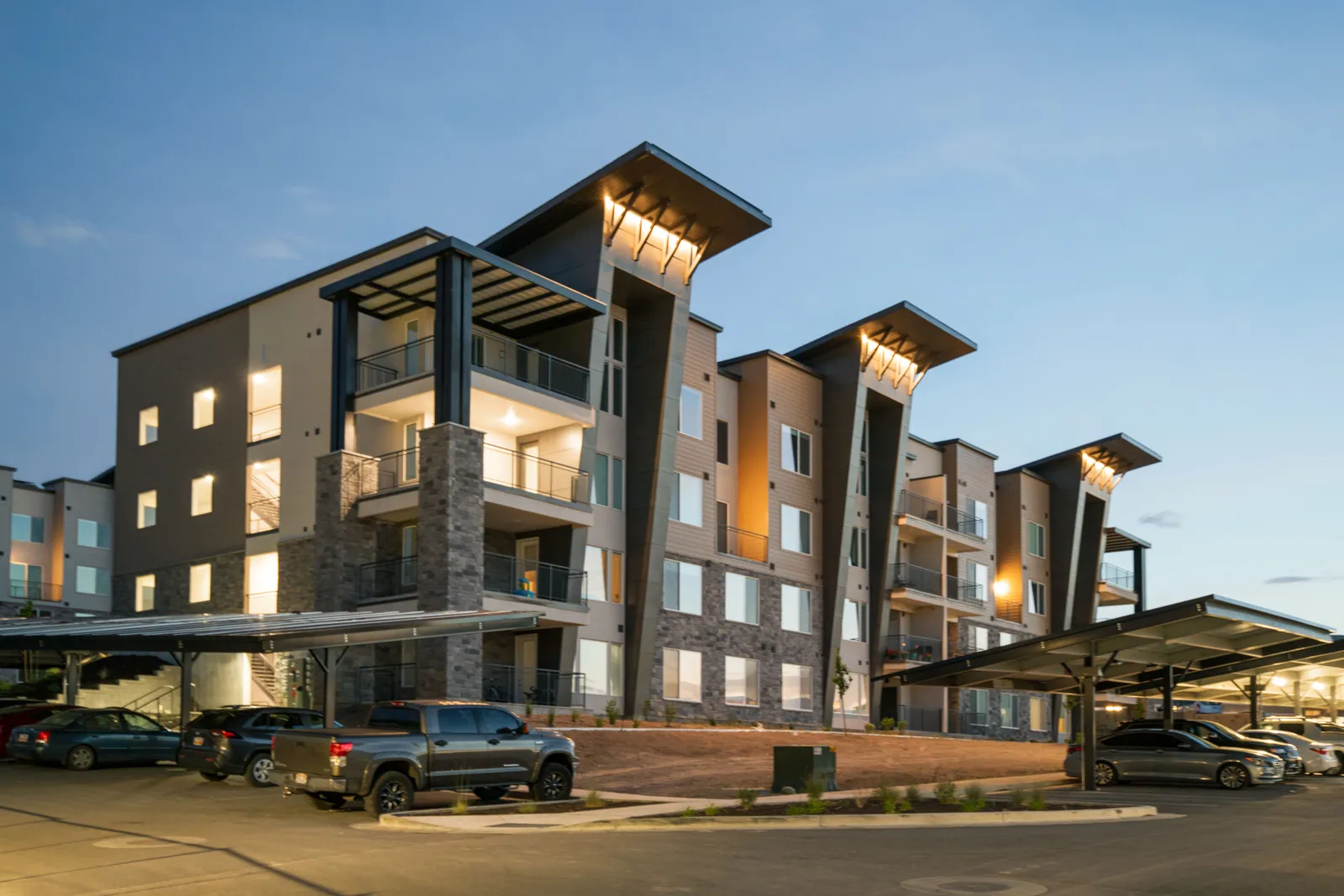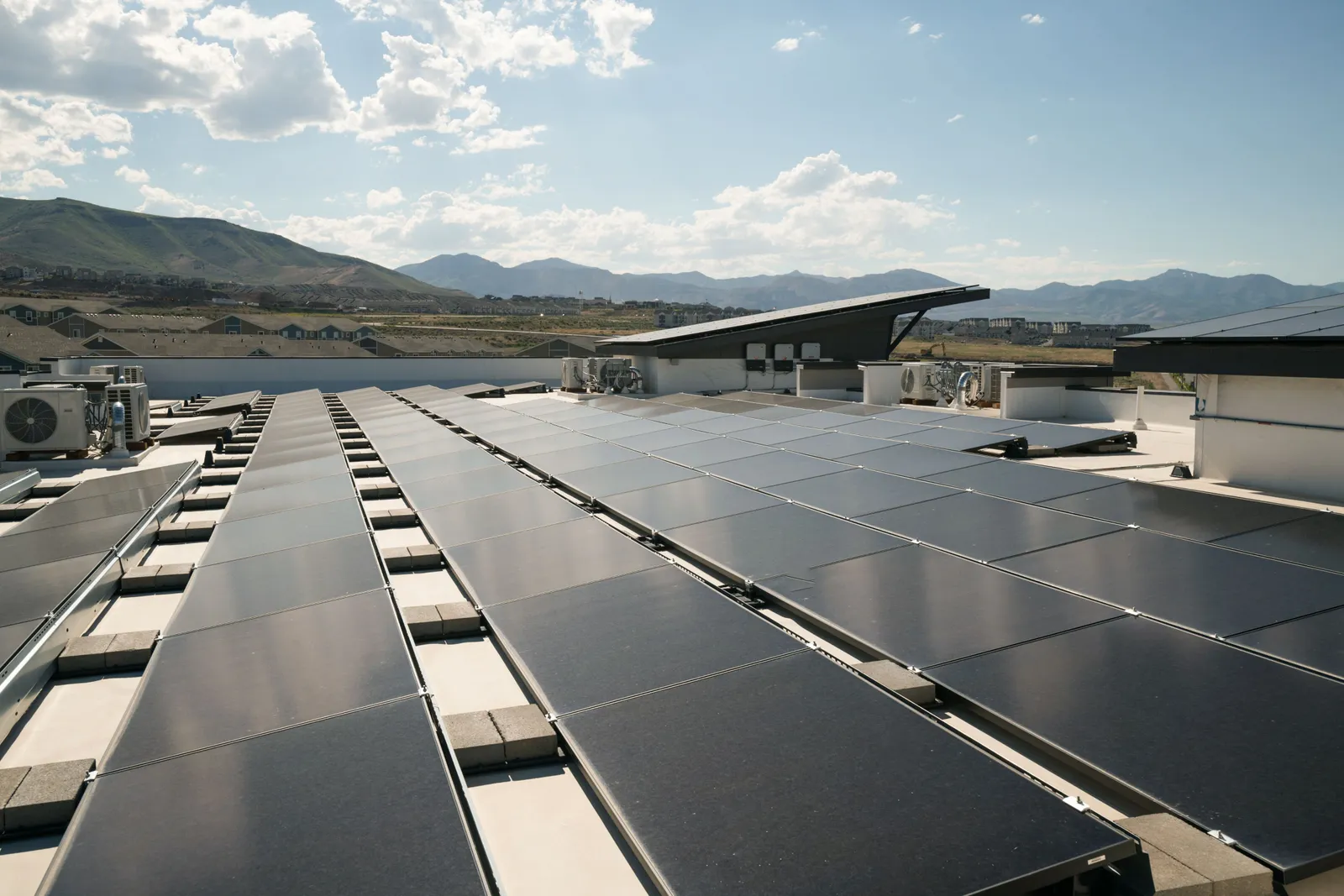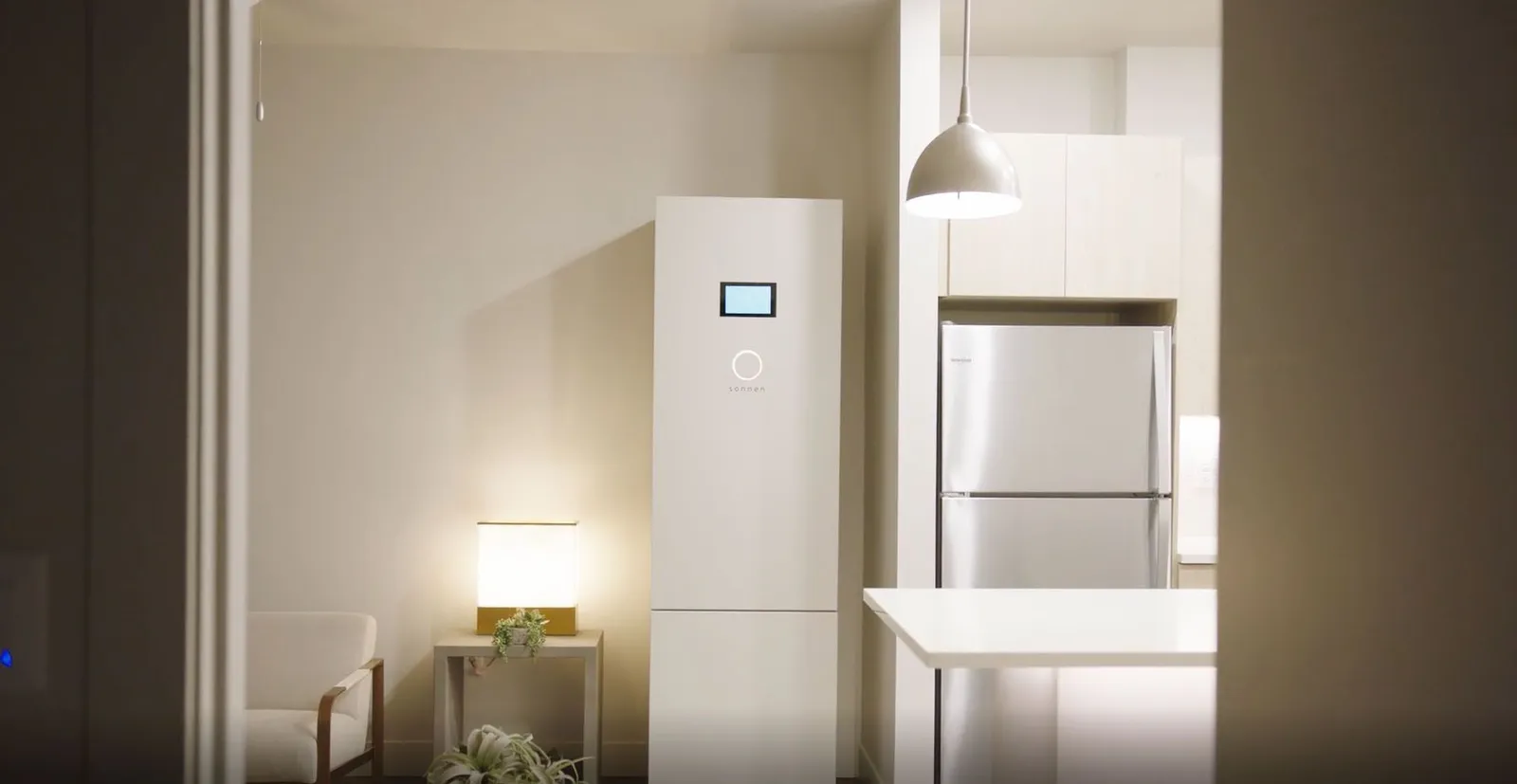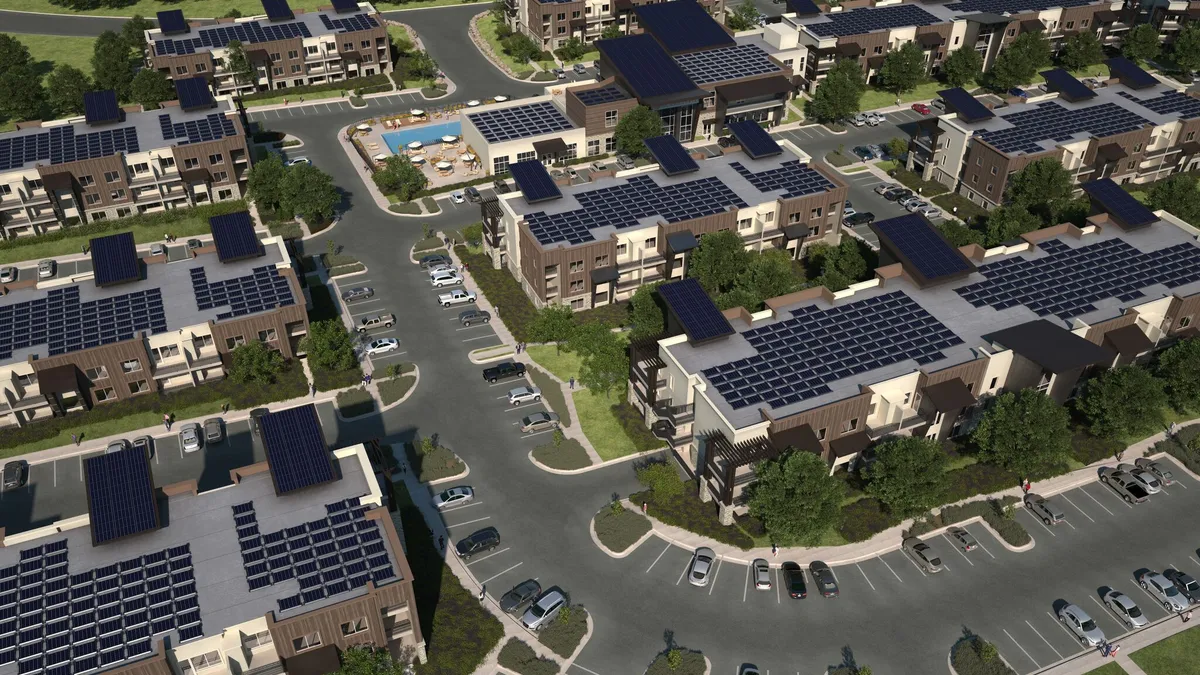In the late 2010s, a trio of companies banded together to create an apartment complex in Herriman, Utah, that could serve as a living space, a virtual power plant, and an example for other organizations that want to incorporate clean power and energy storage into construction projects.
Soleil Lofts was finished two years ago. Installing about 5 MW of rooftop solar panels and 12.6 MWh of battery storage at the 600-unit apartment complex cost $34.3 million. The building is a collaboration among Rocky Mountain Power; sonnen Inc., the U.S. division of the German energy storage and VPP company; and the Wasatch Energy Group in Orem, Utah.
Rocky Mountain Power, which provides electricity to customers in several Western states including Utah, broadly applied what it learned from the project across its service area, said William Comeau, vice president of experience and innovation at the company.
“We’re taking lessons learned from Soleil Lofts and replicating it and letting all customers in Utah and Idaho participate,” he said. “We created it as something that could be scaled, and we've scaled it. We've moved from hundreds to thousands of batteries all over Utah and into Idaho and we’re considering other states.”
Rocky Mountain Power doesn’t see the building as an ending, said Blake Richetta, chairman and CEO of sonnen, Inc., the U.S. subsidiary of sonnen Global Holdings.
“Soleil Lofts was only a blueprint,” he said.
The building has solar panels on nearly every available surface and batteries the size of a refrigerator in every apartment, which reduces energy costs and lowers electric bills for residents, Comeau said.
“On a daily basis we are charging those batteries with solar energy when there is excess solar energy on the grid,” he said. “We’re dispatching them and utilizing that energy during peak periods in the evening” when electricity from the grid is more expensive.

The building is part of Rocky Mountain Power parent company Pacificorp’s plan to add 20,000 MW of wind and solar power by 2032, and 7,400 MW of energy storage by 2029. And those goals are part of the utility’s plan to reduce its carbon emissions 70% below 2005 levels by 2030.
The project remains one of a kind, according to the developers.
“Soleil Lofts is the only community with a battery in every single apartment home,” Richetta said.
It is the largest multifamily VPP community that is dispatched by a utility daily, Oman added.
Here are a few lessons the companies learned from building the apartment complex in the Salt Lake City suburbs:
Lesson 1: Solar companies and utilities can work together
“The solar industry and the utilities haven't always gotten along,” said Jay Oman, senior vice president of Wasatch Energy Group. “Solar is pushing as much net metering as they possibly can, but the utility doesn't want any net metering. As they fight for their self interest, you get different outcomes.”
Soleil Lofts proves they can work together, he said. “And it was a win-win.”
Fighting climate change is too heavy a lift to be shouldered by a single company, Comeau said.
“We have very aggressive goals to decarbonize our grid, and to be able to do that you need programs, you need products, and you need partnerships,” he said.
Lesson 2: Customers and utilities can work together
“We’re going through a huge transformation and customers are a big, big part of that,” Comeau said.
In the case of Soleil Lofts, the utility pays customers upfront and annual incentives to use their batteries when the power grid is strained through a program called WattSmart. The program extends beyond Soleil Lofts and has about 3,000 customers, Utah Business reported last month.
But more than that, Rocky Mountain Power and its partners needed customers who were willing to take a chance on something that had never been tried before.
It turned out Utahans were eager to give the building a try. Oman said the apartments filled up almost immediately once they became available.
“Normally it takes a year or so before you get fully leased out,” he said.
Lesson 3: Virtual power plants work
With solar panels in every available spot and a storage battery in every apartment, Soleil Lofts is one large virtual power plant, and the complex proves the concept can work, Oman said.
“We think the project's been very much a success,” he said.
The complex does everything a virtual power plant is supposed to do, in that it generates power and returns excess energy to the grid.

Lesson 4: Utilities can take the lead on energy storage projects
“You can't necessarily wait,” Comeau said. “Sometimes you have to lead out and be very clear about what is needed.”
A project like Soleil Lofts will take years to come to fruition, he said. And decarbonization goals at utilities like Rocky Mountain Power mean that the sooner they get started, the better.
“It's the type of solution that's required for the transition to a sustainable future,” Comeau said. “If we don't have programs like this, it's a huge missed opportunity.”
Lesson 5: Buildings can rely on solar power and batteries, up to a point
Soleil isn’t quite self-sustaining, but it’s close, with the solar panels and batteries providing between 80% and 85% of the building’s energy needs.
“For an all-electric community, I think that's phenomenal,” Oman said.
Panels were placed in every available space, blanketing the roof and the canopies over spaces in the building’s parking lot, he said.
Lesson 6: Solar power and batteries can be a reliable backup during blackouts
“Most of the time you’re a self-consumer, matching the loads of the apartment with the power in the battery,” Oman said.
Because of this, Soleil Lofts was one of the few buildings in Herriman that retained power during a recent blackout, Richetta said.
The solar power, in concert with storage batteries, provided enough electricity, even as the building received nothing from the grid.
“We can cycle the battery every day,” Oman said. “And they can be a grid resource, and other ancillary services can be provided to the local utility.”

Lesson 7: Soleil Lofts can be replicated
“Batteries are performing grid services throughout the state,” Richetta said. “None of that program would have happened if not for Soleil Lofts.”
“It really is one piece of a much larger puzzle,” he said.
Incorporating the building into the grid required a software program that Rocky Mountain Power uses across its coverage area, Comeau said. Thanks to Soleil, the company knows the program works.
“We have a robust behind-the-meter battery demand response program that is fully integrated with the utility and dispatched from the utility,” Comeau said.
“To replicate Soleil is not as difficult as one might think,” Richetta said.
Sonnen and the Wasatch Group, for example, partnered on the Heron Pointe Apartment complex in Fresno California, which was announced in 2020 and includes 1.3 MW of rooftop solar along with 1.9 MWh of storage capacity.
Clarification: This story has been updated to better describe sonnen Inc., one of the partners in the Soleil Lofts project.





















